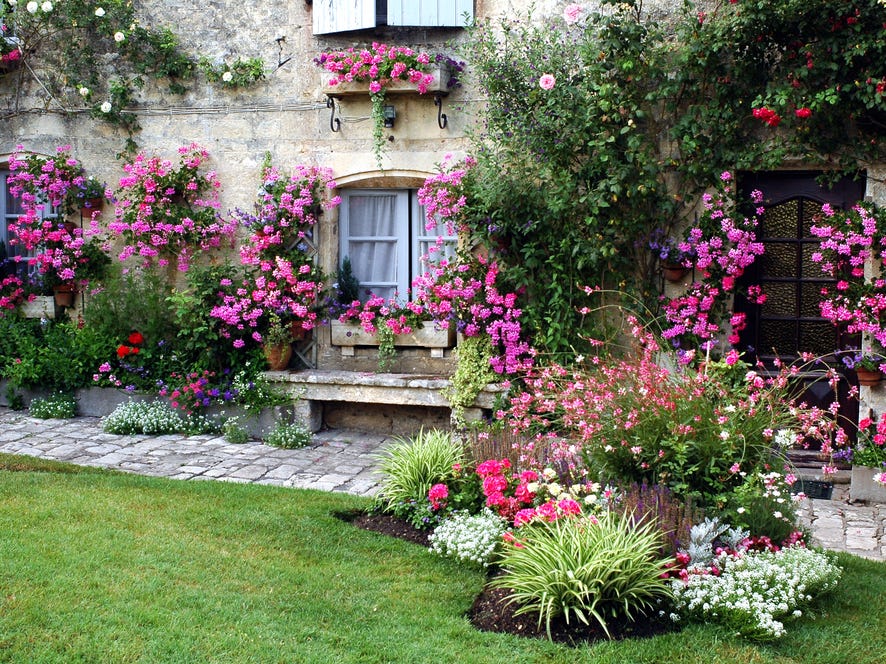Is gardening your passion? Want to keep your yard full of easy-to-care plants? Then you have landed in the right place. If you are unable to water your plants every day and keep them in shape, then follow these simple ways to keep your yard low maintenance.

- Plant in the perfect spot:
Are you wondering which plant is perfect for your yard? A perfect home for your plant is necessary to make sure it needs low maintenance. When buying the plants, make sure you choose a variety that does not overgrow in the limited space. Some plants are small and they don’t grow much, while others spread rampantly.
Apart from the plant type, make sure that the light condition and soil type of your garden are best for plant health. Soil is the basic component for plant growth so make sure you use your soil and put your plant wisely.
- Start with proper nutrients:
What should you add for healthy planting? Planting with the addition of essential nutrients makes your plants happy. If you plant deeply, then your plants might fail.
- Layout:
How to evaluate the layout and start putting down the plants? The layout of the plant is essential as at the end of the day your garden should look aesthetically appealing. Make sure to explore the entire area and look for enough sunlight and water supply in that area. For low maintenance of the yard, plant in an odd fashion to make your garden look full and appealing to the eyes.
- Plant sizing and spacing:
Is it necessary to consider the spacing of your yard and plant sizing? For organizing a yard with low maintenance, consider plant size and spacing in the garden. Do not overgrow the garden with tall, clustered plants. Add a variety and do not overshadow small plants in your yard. Plant sizing varies in terms of weather, placement of plants, sunlight, and your yard’s soil conditions.
- Mulch:
What else is necessary for healthy plants? Mulching is the answer to growing healthy plants and keeping the yard low maintenance. For watering, sprouting, and weeding plants, you need moisture retention and enough sunlight for plants. Mulch the base of the plants to around 1-1 ½ inches.
Avoid mulching early and make sure to be patient. There are pollinators and beneficial insects who smother the ground and don’t help much if you have done mulching.
- Enough watering in the yard:
Is it important to water you plant daily? Do I need to perform watering every day? Watering your plants for low maintenance is essential for healthy plants. You can have an automatic irrigation system or opt for a soaker hose which you can place under a mulch layer, while if you find you have spare time to water the plants, you can invest in a water wand and reach the hose nozzle for water flow. If you do, however, opt to install automatic irrigation or another sprinkler-based system for your yard, be sure to pair this with the correct drainage system in order to minimize any risk of flooding or soil damage. You can contact a local yard drainage service to identify what the right drainage system for your garden may be, protecting the space and guaranteeing it will thrive well into the future.
- Fill in the entire space:
Should I leave spacing between plants? Don’t leave any open spaces, ensure that covering open spaces with groundcovers or grasses prevents weeds from having roots. Make sure to choose the correct variety. If you have a patchy yard then invest in ground cover. Save your time in mowing and enjoy stunning results with low-maintenance tips.
- Use four-season plants:
The next question that arises is what should you plant in spaces and perfect spots? Make sure to plant shrubs or meadow plants that are easy to grow and survive in such areas. The prime examples of these plants include Dwarf/Compact Shrubs, Azaleas, False Cypress, Barberry, Cotoneasters, Deutzia, Fothergilla, Junipers, and much more. Apart from four-season plants, healthy, sturdy plants are great as they are easy to maintain. They don’t have invasive perennials and fast-spreading roots. If you have any invasive plants, make sure to prevent them from excessive sprouting by adding pre-emergent herbicide.
- Pruning & cleaning:
How to get rid of all debris, excess roots, leaves, and more? Pruning is essential to get rid of all disfigured branches and shrubs. They usually occur because of the winter seasons. Remove the unwanted shrubs or trees during late winters or early spring so that your plant’s flowers bloom in the upcoming months.
Cleaning the leaves is also done after winter or spring. Make your yard beautiful and remove leaves. However, leave some leaves for pollination and wildlife survival.
Address the aggressive, wild weeds as they get worse during daylight hours in summer. The roots of these weeds strengthen up and become difficult in terms of pulling out.
Follow simple gardening low maintenance tips like don’t mow short, let mow clippings to return your yard, skip any spring fertilization, avoid under or overwater and use herbicide.
- Note down:
Last but not the least, keep a complete scrapbook or journal having plant tags in the garden. It is useful and very handy. You can write down the fertilizing and watering schedule with maintenance tips for specific plants.
For further details, get an insight on the front yard landscaping ideas for keeping your yard low maintenance.




